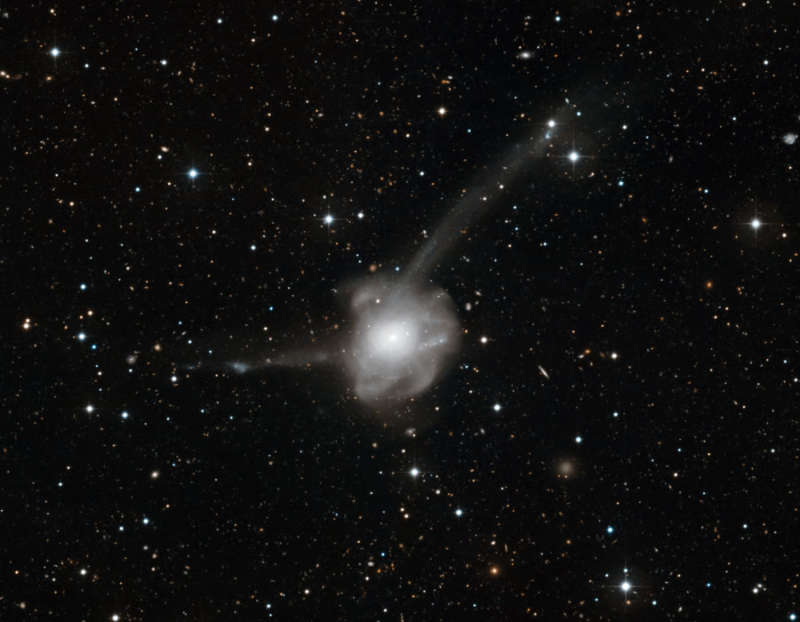
|
Credit & Copyright: ESO
Explanation:
Is this what will become of our Milky Way Galaxy?
Perhaps if we
collide with the Andromeda Galaxy
in a few billion years, it might.
Pictured above is NGC 7252, a jumble of stars created by a
huge collision between two large galaxies.
The collision will take hundreds of millions of years and so is
effectively caught frozen in time in the
above image.
The resulting pandemonium has been dubbed the
Atoms-for-Peace
galaxy because of its similarity to a
cartoon of a large atom.
The above image
was taken recently by the
MPG/ESO 2.2 meter
telescope in
Chile.
NGC 7252 spans about
600,000 light years and lies about 220 million
light years
away toward the
constellation of the
Water Bearer (Aquarius).
Since the sideways velocity of the
Andromeda Galaxy (M31) is presently unknown, no one really
knows for sure if the Milky Way will ever
collide with M31.
|
January February March April May June July August September October November December |
| ||||||||||||||||||||||||||||||||||||||||||||||||
NASA Web Site Statements, Warnings, and Disclaimers
NASA Official: Jay Norris. Specific rights apply.
A service of: LHEA at NASA / GSFC
& Michigan Tech. U.
Based on Astronomy Picture
Of the Day
Publications with keywords: colliding galaxies - Milky Way - M 31
Publications with words: colliding galaxies - Milky Way - M 31
See also:
- Andromeda and Friends
- APOD: 2025 August 6 B Meteor before Galaxy
- APOD: 2025 July 2 B Milky Way Through Otago Spires
- APOD: 2025 May 20 B Milky Way over Maunakea
- APOD: 2025 May 13 B Gaia Reconstructs a Top View of our Galaxy
- APOD: 2025 May 12 B Gaia Reconstructs a Side View of our Galaxy
- APOD: 2025 May 7 B Galaxy Wars: M81 versus M82
